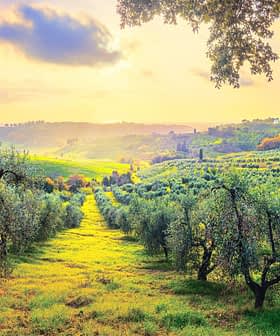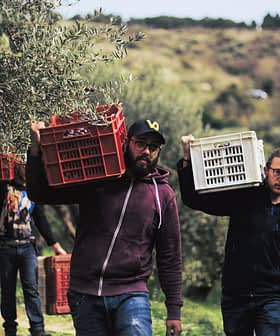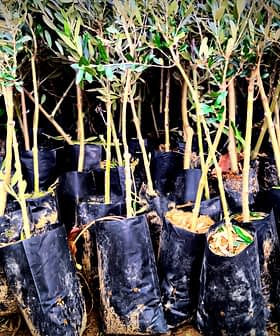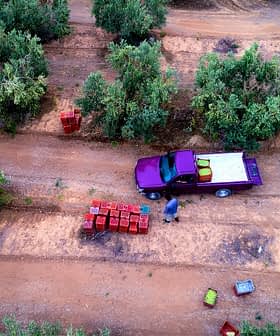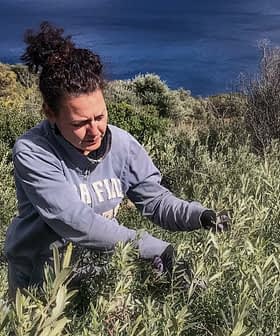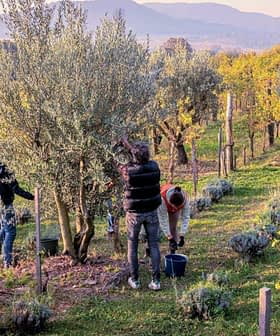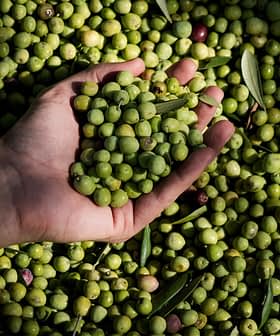Farmers in France Confirm Grim Predictions as Harvest Gets Underway
Heat and drought led to premature olive drops across southern France. The yield is expected to fall by 50 percent compared to last year.
 (Photo: Mas des Bories)
(Photo: Mas des Bories) Unusual weather conditions in France have led to significantly lower expectations for olive oil production in the 2022 harvest, with some regions expecting yields to be 50 percent below last year’s. The changing climate, including dryness and high temperatures, has impacted the quantity and quality of olives, leading producers to adapt to the challenges posed by climate change.
Unusual weather conditions after the flowering and during the summer have affected French olive growers’ expectations for the 2022 harvest.
Growers and experts believe the olive oil yield in the country will be significantly lower compared to previous years. In August, producers estimated the harvest would be 50 percent below last year’s.
In the face of climate change, as a small producer, we have to be way more reactive and flexible than in the past.
“The changing climate is an increasing challenge. The dryness we experienced this year, coupled with very high temperatures, might affect quantity and quality in many areas,” Marie Barbé, technical manager at Domaine de Leos, a producer in Provence and NYIOOC World Olive Oil Competition winner, told Olive Oil Times.
“At the beginning of the season, we were very happy with the flowering, then came the winds and the heatwaves, so a lot of flowers dried up,” she added. “On top of that is the scarcity of water which has been having an impact on the development of the olive.”
See Also:2022 Harvest UpdatesAnthony Bérenguier, olive oil production manager at Moulins de Callas in southeastern France, told local media that he expects a 20 to 60 percent lower yield.
“Normally, I can plan for 60 to 80 tons per year in my 12 hectares,” he said. “This season, I do not expect to reach half of that.”
According to Olivier Nasles, president of the National Committee of Organic Agriculture, there will be a considerable production drop in the 2022 harvest.
“We will have to be happy if we manage to produce 3,000 tons [of olive oil] against the 5,500 of the last season,” he said.
Nasles told LeGrandPastis that such numbers are not “catastrophic.”
“But when we look at the behavior of the olive groves, we no longer fully understand what is happening,” he said, referencing the increasingly evident impact of climate change on traditional olive production.
Producers say that changes are coming to olive growers, and adaptation is vital.
“In just 20 years, I have seen a lot of changes, so we have to adapt,” Barbé said. “For instance, you have to study the cultivars, understanding which of them are reacting better to change.”
Jean-Benoit Hugues, the owner of Moulin Castelas in Les Baux-de-Provence, told Anadolu Agency that he expects a 50 percent drop in olive oil production.
Hughes blamed the heatwave suffered in the region. “We lost a lot of the harvest, and the olives which survived are too small.”
Barbé said adaptation to the changing climate is vital to organic farming.
“During this hot, dry summer, we provided the trees some emergency irrigation but no more than that,” she said. “The aim is a good harvest, of course, but I do not want to push the trees.”
“We prefer to follow nature and the season, to adapt to its rhythm,” Barbé added. “We just aim at maintaining the roots of the trees in a good state so they can produce good quality fruits.”
“Our approach is entirely organic,” she continued. “Some organic amino acids might be used to protect the trees from excess heat, and other organic farming techniques aim to prevent an excess of evapotranspiration in the field. The goal is to adapt to the climate and continue focusing on high quality.”
The country’s most relevant table olive and olive oil-producing regions are Bouches-du-Rhône, le Gard, la Drôme, le Var and le Vaucluse. All have been affected to some extent by the exceptional weather conditions of the last few months.
Eight Protected Designation of Origin (PDO) extra virgin olive oils are produced in those regions. Such PDOs represent approximately 27 percent of French olive oil production.
According to France Olive, an industry association, 66 percent of national olive oil production comes from southern Provence-Alpes-Côte d’Azur. Some small growers managed to avoid the worst effects of this year’s extraordinary weather.
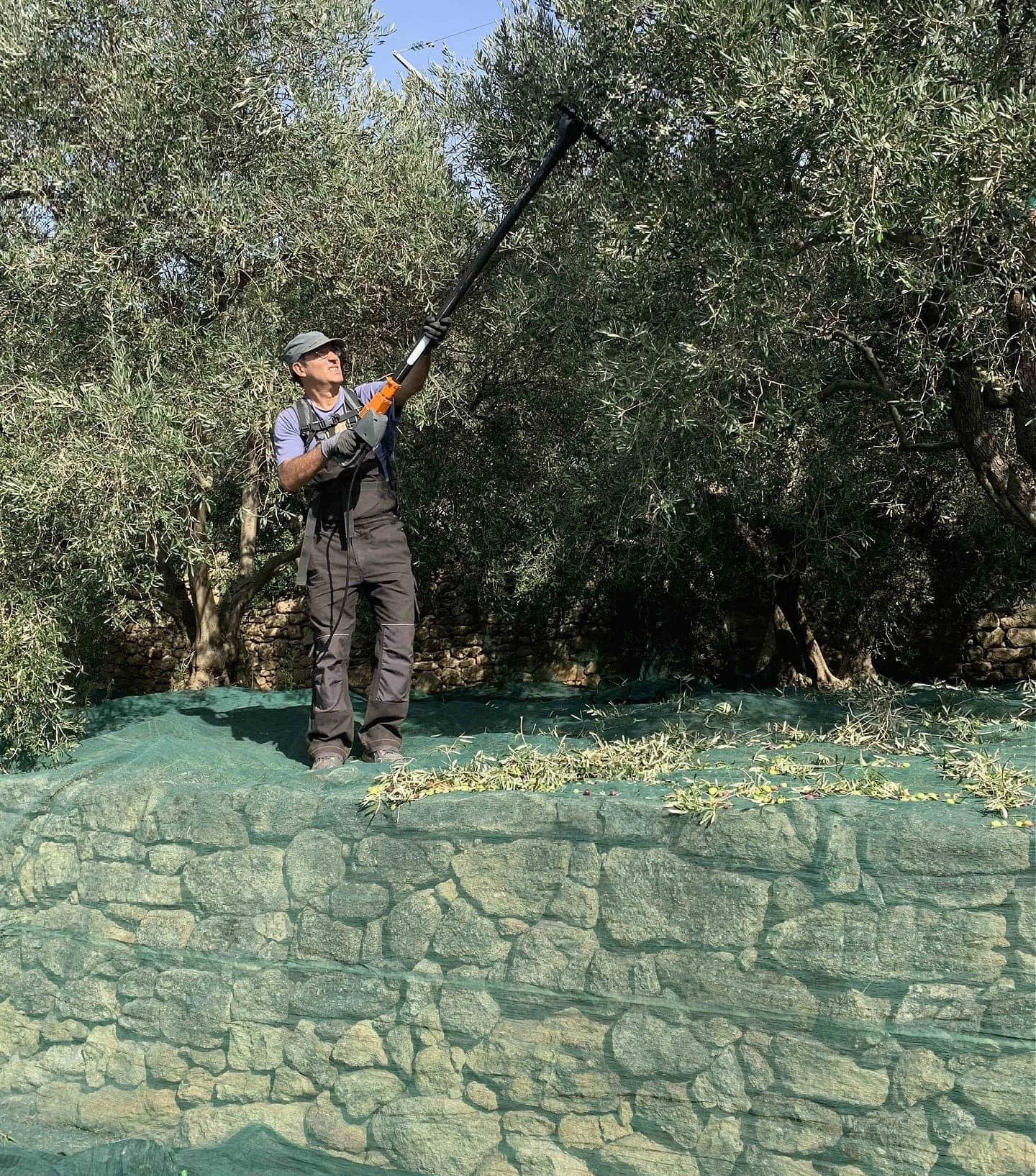
(Photo: Mas des Bories)
“The drought has hit many areas of the country, and we all face the consequences of an extraordinary situation,” Claire Coutin, owner of Mas des Bories in Salon de Provence, told Olive Oil Times.
“In some olive-producing areas, growers are left with no olives at all,” the NYIOOC winner added. “In our case, we were quite lucky, as we expect a very good harvest both in quality and volumes.”
“I say this as the number of olives is way larger than last year, and I can see our trees are very healthy, I would say happy olive trees, so I expect quality to be very high,” she continued.
Coutin believes that the extraordinary weather events of last summer and the prolonged drought will influence yields but will have a minimal impact on quality.
“With such a hot summer, the olive trees have experienced some stress, of course,” she said. “Still, we expect our best harvest to come from local varieties such as Bouteillan and Grossane, which traditionally do not yield huge volumes.”
“This is because they do not produce large amounts of olives, and their olives do not carry large quantities of olive oil,” Coutin added. “However, this year, we are seeing that they are faring better than usual.”
The first weeks of October will see many farmers begin their harvest.
“We will probably start harvesting in mid-October, which is earlier than we used to do,” Coutin said, adding that the goal was to produce a green fruity oil, “which is appreciated by our customers in the United States. Every year it seems that the right moment comes a bit earlier.”
According to a recent report by Meteo France, heatwaves in the country are expected to increase substantially.
In the past, such extreme events affected the country every five years on average, but since 2000, they have become an annual phenomenon.
Furthermore, French meteorologists believe that the duration of the heat waves has increased nine-fold in the last few years. In 2022, heat waves hit the country for 28 days in just three months.
“The only good thing about the heatwaves is that we do not see many pests around, as the olive fruit fly does not like too warm temperatures,” Coutin said. “If we talk about climate events and refer only to the last two or three years, I would say that the way we manage our orchard has been continuously changing and adapting.”
“In the face of climate change, as a small producer, we have to be way more reactive and flexible than in the past,” she added. “We used to have a fixed schedule for harvesting our olives. We knew we would have to start at the end of October with a cultivar and then we would have proceeded to the other ones in a specific order.”
“Today, all varieties tend to ripen almost at the same time or, on the contrary, they follow a completely different timing,” Coutin continued. “We need to be always ready.”
In southern France, not all growers expressed optimism about the future, but experienced growers such as Barbé are adapting to the next normal.
“There will be those trying to use conventional means or multiply nutrients on the trees to make them stay strong, but in the end, we should all know that we will have very good years and other seasons when the yields will be low,” Barbé said.
“In Provence, on our hills, we have an ideal terroir to grow olive trees as the soil is rich and rainfall drains very well,” she added. “We also have weather which is usually not too hot.”
“On top of that, there is the advantage of the impact of the sea, which is not so far, and temperatures in winter are not too cold,” Barbé concluded. “Here, you can produce green fruity or ripe fruity olives; both will yield very high quality.”
Share this article


